|
The effect lies between dark field (black-and-white contrast) and oblique illumination (pseudo 3D), related to the positioning of the wedge (optimally 45 degrees) that is positioned underneath the
condensor. The wedge is simple to build and to manage, and it it recommendable from minor magnification up to objective 25x, but difficult for objective 40x and up. The costs are minimal!
Experiment: Observation of onion cells.
Material: knife, tweezers, specimen slide, cover slip, microscope, onion, cardboard sheet with wedged end (ca. 45 degrees).
Realization:
1. Cut an onion in halves and loosen some of the inner ski another drop of water on it and finally cover with cover slip.
2. Observe the specimen at medium magnification (objective 10x). Try to enhance the contrast with the condenser's diaphragm.
3. To enhance the image contrast, first open the diaphragm. Now insert the wedge's tip underneath the condensor as close to the center as possible. When the result is satisfactory, the wedge
can be fixed e.g. with some books.
Exercises:a. Describe the comparison of the rsults of steps 2 and 3.
b. Examine in a similar fashion fruit cells of apples, bananas, tomatoes etc. with the dark field wedge technique.
Bibliography:
Erlebnis Biologie 1 (Schulbuch). Schroedel Verlag, ISBN 3-507-76811-9, S.128
Mikrokosmos (Zeitschrift), Gustav Fischer Verlag. Heft 6/1997
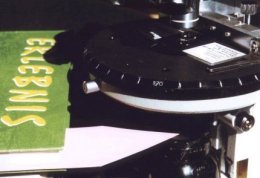
Handling the darkfield wedge |
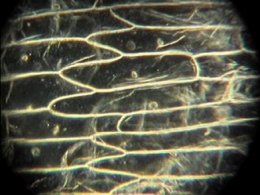
Onion, magnified 10 times |
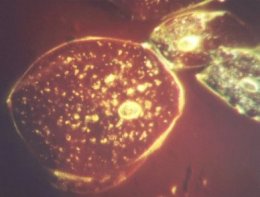
Zelle der Mundschleimhaut, Objektiv 40x |
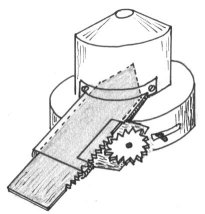 |
The method can be refined to produce the variable dark field method that enables all contrast variations
together with an additional spatial effect by means of oblique illumination. To this purpose, the dark field wedge has to be inserted little by little towards the center. At the appropriate position, a slit can
be cut into the condenser body. An even finer contrast tuning can be achieved with a pinion gear acting upon a toothing on the wedge's side. |
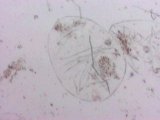
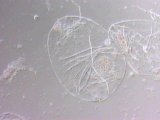
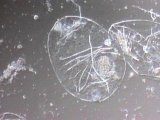
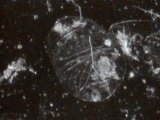
Variable contrast from bright field to total dark field, in proportion to the wedge's degree of insertion; Tomato fruit cell, objective 4x.
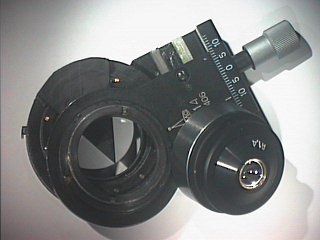
On the pinion adjustable Abbe condenser for oblique illumination from the company LOMO, the dark field wedge can be glued to the diapragm body. |
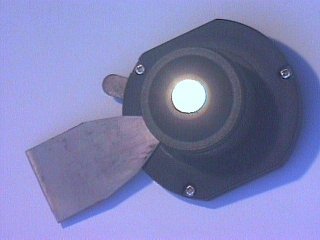
The condenser on some microscopes (here MOTIC B2) has a plastic body into which the insertion slit for the dark field wedge can be cut easily; manual wedge insertion.
|
 Top Top
 Home Home
|